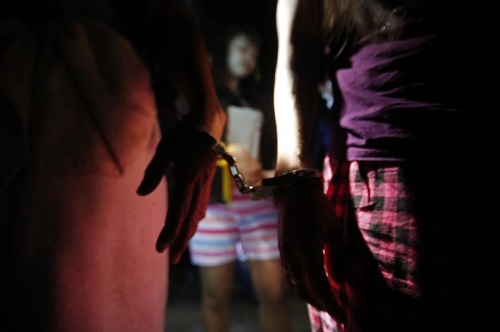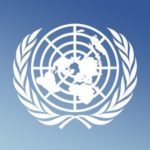Reuters photo
By
UNODC
Armed groups are using human trafficking as a strategy to finance activities or increase their workforce in conflicts around the world, according to a report released today by the United Nations Office on Drugs and Crime (UNODC).
Recruiting children for use as soldiers is widely documented in conflicts in Central Africa and the Middle East, among others, according to the Global Report on Trafficking in Persons. Such groups are also trafficking adults and children for exploitation in mining and other extractive industries, and to spread fear to control the local population.
Women and girls are trafficked into ‘sex slavery’ to boost recruitment and reward soldiers. This was the experience of Nadia Murad, UNODC Goodwill Ambassador for the Dignity of Survivors of Human Trafficking and a winner of the 2018 Nobel Peace Prize, who was sold into sexual slavery along with thousands of other Yazidi girls and women after the Islamic State overran her village in Iraq when she was 19 years old.
“Nadia Murad is the first trafficking victim to serve as a UN Goodwill Ambassador, and by sharing her experience of being enslaved and raped by Islamic State terrorists, she has been a leading voice in exposing this abhorrent crime,” said UNODC Executive Director Yury Fedotov. “I urge the international community to heed Nadia’s call for justice, and I hope this report can contribute to these efforts.”
Within conflict areas, not only armed groups but also other criminals traffic people fleeing danger and persecution. Forcibly displaced populations have been targeted by traffickers, including settlements of Syrian and Iraqi refugees, Afghans and Rohingya. The report highlights that circumstances generated or exacerbated by armed conflict, such as displacement, weak rule of law, socio-economic hardship, social fragmentation and family breakdown, increase people’s vulnerability to trafficking.
The report also shows that 70 per cent of the detected trafficking victims worldwide are female. Around half are adult women, while girls comprise a fifth of all victims and their share of the total is increasing.
Sexual exploitation continues to be the main purpose for trafficking, accounting for some 59 per cent, while forced labour accounts for around 34 per cent of all detected cases.
For children, the patterns appear to be slightly different. While boys are mainly trafficked for forced labour (50 per cent), many are also trafficked for sexual exploitation (27 per cent) and ‘other’ forms of exploitation such as begging, child soldiers and forced criminal activities. Girls were trafficked in 72 per cent of cases for sexual exploitation and in 21 per cent of cases for forced labour.
Globally, countries are detecting and reporting more victims and convicting more traffickers. The number of victims reported peaked at more than 24,000 detected victims in 2016, and the increases in numbers of detected victims have been more pronounced in the Americas and in parts of Asia.
The share of domestic victims, persons trafficked within their own country, among those detected has more than doubled from 27 per cent in 2010 to 58 per cent in 2016, the study finds. Most of the trafficking victims that are detected in regions other than their own come from parts of East Asia or sub-Saharan Africa. This may be related to the high level of impunity in these regions, which are often areas of origin for trafficking victims.
However, the world’s richest countries are more likely to be destinations for victims who are trafficked from more distant origins, and increased international cooperation is required to respond.
“While we are far from ending impunity, international and national efforts to effectively implement the Protocol against Trafficking in Persons have made a difference. Over the past ten years, the share of countries recording no convictions declined from 15 per cent to nine per cent, and some countries recorded their first convictions during the 2014 to 2016 period,” said Mr. Fedotov. “This Report shows that we need to step up technical assistance and strengthen cooperation, to support all countries to protect victims and bring criminals to justice, and achieve the Sustainable Development Goals.”
The report, produced by UNODC every two years, reinforces the link between tackling this crime and achieving the UN Sustainable Development Agenda. The Global Report on Trafficking in Persons 2018 is being launched just weeks after the adoption of the Global Compact for Safe, Orderly and Regular Migration, which reinforced the existing international legal framework and highlighted the key importance of the UN Trafficking in Persons Protocol.
UNODC
UNODC is a global leader in the fight against illicit drugs and international crime. Established in 1997 through a merger between the United Nations Drug Control Programme and the Centre for International Crime Prevention, UNODC operates in all regions of the world through an extensive network of field offices. UNODC relies on voluntary contributions, mainly from Governments, for 90 per cent of its budget.



No Comments Yet!
You can be first to comment this post!